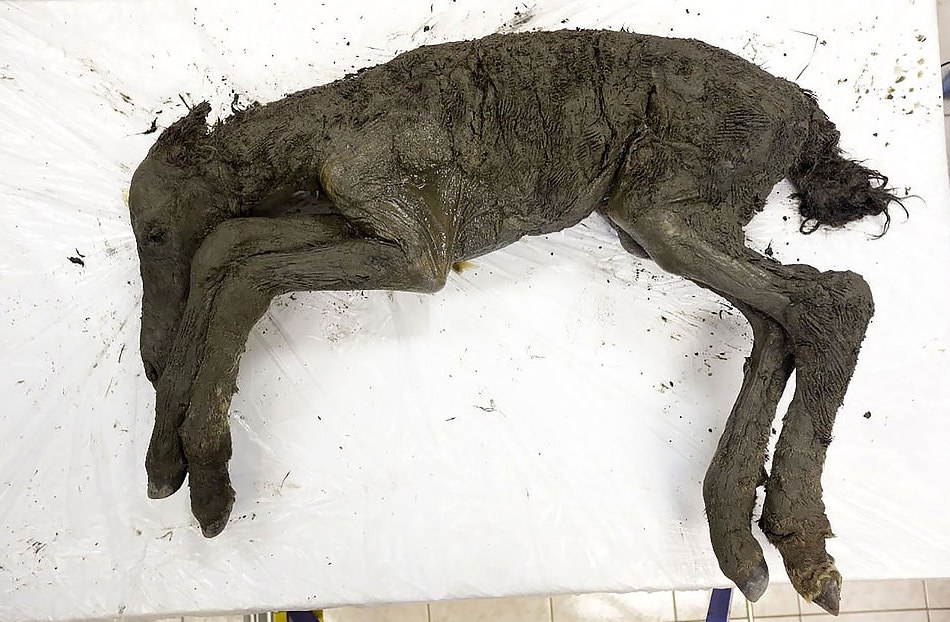
42,000-year-old horse still contains liquid blood and urine
42,000-year-old horse still contains liquid blood and urine. As we reported, researchers looking for mammoth tusks in Russia uncovered a 42,000-year-old frozen foal carcass. But now, researchers have confirmed that the specimen still contains liquid blood and urine. The foal was unearthed from the permafrost in Siberia’s Batagaika crater, located in the region of Verkhoyansk, in 2018.
“An autopsy showed the foal carcass was extremely well-preserved, the body even without deformation,” Semyon Grigoriev, director of the Mammoth Museum at Northeastern Federal University (NEFU) in Yakutsk, told CNN. “The hair cover also preserved most parts of the carcass, especially at the head and legs.”
Scientists believe the foal was only about two weeks old when it died, likely from drowning in mud during the Pleistocene epoch, which spanned from about 2.6 million years ago to about 11,700 years ago.
It’s rare to see such perfectly preserved fur, Grigoriev told CNN. “Now we can say what color was the wool of the extinct horses of the Pleistocene era,” he said.42,000-year-old horse still contains liquid blood and urine
However, it’s the liquid blood and urine that raised eyebrows within the science community. According to Grigoriev, there is only one other instance where liquid blood was found in a prehistoric animal carcass — an adult mammoth, which Grigoriev and his team found off the coast of Russia in 2013.
“As a rule,” Grigoriev explained, “the blood coagulates or even turns to powder in the ancient remains of animals of the ice age, even if the carcass is preserved seems to be well. This is due to mummification when moisture and other biological fluids gradually evaporate over thousands of years, even if the remains are in the permafrost. The remains are preserved best if they are in the ice, as it was with our mammoth.”
Grigoriev added that scientists extracted the foal’s bodily fluids for potential cloning purposes. Specialists from NEFU are working with South Korea’s ethically controversial Sooam Biotech Research Foundation (the same foundation that faked the cloning of a human embryonic stem cell in 2004) to extract cells from the foal, however Grigoriev says the chances they’ll be able to produce a clone are slim.
“I think that even the unique preservation [of] blood is absolutely hopeless for cloning purposes since the main blood cells — the red blood cells or erythrocytes — do not have nuclei with DNA,” Grigoriev told CNN. “We [are] trying to find intact cells in muscle tissue and internal organs that are also very well-preserved.”
In 2020, the ancient foal will be on display in Japan as part of The Mammoth exhibition.
—
By Olivia Harvey, Earth.com Staff Writer
Main Image Credit: Michil Yakolev/The Siberian Times













